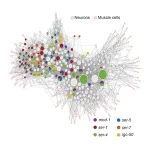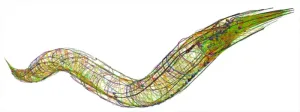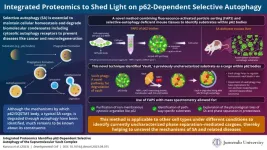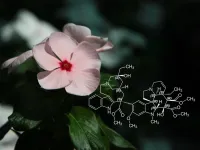(Press-News.org) About 100 million years ago, a group of trendsetting moths started flying during the day rather than at night, taking advantage of nectar-rich flowers that had co-evolved with bees. This single event led to the evolution of all butterflies.
Scientists have known the precise timing of this event since 2019, when a large-scale analysis of DNA discounted an earlier hypothesis that pressure from bats prompted the evolution of butterflies after the extinction of dinosaurs.
Now, scientists have discovered where the first butterflies originated and which plants they relied on for food.
Before reaching these conclusions, researchers from dozens of countries had to create the world’s largest butterfly tree of life, assembled with DNA from more than 2,000 species representing all butterfly families and 92% of genera. Using this framework as a guide, they traced the movements and feeding habits of butterflies through time in a four-dimensional puzzle that led back to North and Central America. According to their results, published this Monday in the journal Nature Ecology and Evolution, this is where the first butterflies took flight.
For lead author Akito Kawahara, curator of lepidoptera at the Florida Museum of Natural History, the project was a long time coming.
“This was a childhood dream of mine,” he said. “It’s something I’ve wanted to do since visiting the American Museum of Natural History when I was a kid and seeing a picture of a butterfly phylogeny taped to a curator’s door. It’s also the most difficult study I’ve ever been a part of, and it took a massive effort from people all over the world to complete.”
There are some 19,000 butterfly species, and piecing together the 100 million-year history of the group required information about their modern distributions and host plants. Prior to this study, there was no single place that researchers could go to access that type of data.
“In many cases, the information we needed existed in field guides that hadn’t been digitized and were written in various languages,” Kawahara said.
Undeterred, the authors decided to make their own, publicly available database, painstakingly translating and transferring the contents of books, museum collections and isolated web pages into a single digital repository.
Underlying all these data were 11 rare butterfly fossils, without which the analysis would not have been possible. With paper-thin wings and threadlike, gossamer hairs, butterflies are rarely preserved in the fossil record. The few that are can be used as calibration points on genetic trees, allowing researchers to record timing of key evolutionary events.
The results tell a dynamic story — one rife with rapid diversifications, faltering advances and improbable dispersals. Some groups traveled over impossibly vast distances while others seem to have stayed in one place, remaining stationary while continents, mountains and rivers moved around them.
Butterflies first appeared somewhere in Central and western North America. At the time, North America was bisected by an expansive seaway that split the continent in two, while present-day Mexico was joined in a long arc with the United States, Canada and Russia. North and South America hadn’t yet joined via the Isthmus of Panama, but butterflies had little difficulty crossing the strait between them.
Despite the relatively close proximity of South America to Africa, butterflies took the long way around, moving into Asia across the Bering Land Bridge. From there, they quickly covered ground, radiating into Southeast Asia, the Middle East and the Horn of Africa. They even made it to India, which was then an isolated island, separated by miles of open sea on all sides.
Even more astonishing was their arrival in Australia, which remained sutured to Antarctica, the last combined remnant of the supercontinent Pangaea. It’s possible butterflies once lived in Antarctica when global temperatures were warmer, making their way across the continent’s northern edge into Australia before the two landmasses separated.
Farther north, butterflies lingered on the edge of western Asia for potentially up to 45 million years before finally migrating into Europe. The reason for this extended pause is unclear, but its effects are still apparent today, Kawahara explained.
“Europe doesn’t have many butterfly species compared to other parts of the world, and the ones it does have can often be found elsewhere. Many butterflies in Europe are also found in Siberia and Asia, for example.”
Once butterflies had become established, they quickly diversified alongside their plant hosts. By the time dinosaurs were snuffed out 66 million years ago, nearly all modern butterfly families had arrived on the scene, and each one seems to have had a special affinity for a specific group of plants.
“We looked at this association over an evolutionary timescale, and in pretty much every family of butterflies, bean plants came out to be the ancestral hosts,” Kawahara said. “This was true in the ancestor of all butterflies as well.”
Bean plants have since increased their roster of pollinators to include various bees, flies, hummingbirds and mammals, while butterflies have similarly expanded their palate. According to study co-author Pamela Soltis, a Florida Museum curator and distinguished professor, the botanical partnerships that butterflies forged helped transform them from minor offshoot of moths to what is today one of the world’s largest groups of insects.
“The evolution of butterflies and flowering plants has been inexorably intertwined since the origin of the former, and the close relationship between them has resulted in remarkable diversification events in both lineages,” she said.
END
Butterfly tree of life reveals an origin in North America
2023-05-15
ELSE PRESS RELEASES FROM THIS DATE:
From molecular to whole-brain scale in a simple animal, study reveals serotonin’s effects
2023-05-15
Because serotonin is one of the primary chemicals the brain uses to influence mood and behavior, it is also the most common target of psychiatric drugs. To improve those drugs and to invent better ones, scientists need to know much more about how the molecule affects brain cells and circuits both in health and amid disease. In a new study, researchers at The Picower Institute for Learning and Memory at MIT working in a simple animal model present a comprehensive accounting of how serotonin affects behavior from the scale of individual molecules all the way to the animal’s whole brain.
“There have been major challenges ...
Assessment of sociodemographics and inflation-related stress
2023-05-15
About The Study: This analysis of U.S. Census Bureau survey data found that rising inflation has become a significant source of stress, especially among women and those who were socioeconomically more vulnerable.
Authors: Cary Wu, Ph.D., of York University in Toronto, is the corresponding author.
To access the embargoed study: Visit our For The Media website at this link https://media.jamanetwork.com/
(doi:10.1001/jamanetworkopen.2023.13431)
Editor’s Note: Please see the article for additional information, including other authors, author contributions and affiliations, ...
Population-based estimates for the prevalence of multiple sclerosis in the US
2023-05-15
About The Study: In this national population-based cohort study of multiple sclerosis (MS) prevalence, researchers found that the distribution of MS in the United States has become more racially and ethnically diverse. White individuals continued to have the highest prevalence of MS followed by Black individuals, individuals from other races, and Hispanic individuals.
Authors: Mitchell T. Wallin, M.D., M.P.H., of the University of Maryland School of Medicine in Washington, D.C., is the corresponding author.
To access the embargoed study: Visit our For The Media website at this link https://media.jamanetwork.com/
(doi:10.1001/jamaneurol.2023.1135)
Editor’s ...
Risk of Parkinson disease among service members at Marine Corps Base Camp Lejeune
2023-05-15
About The Study: This study of 340,000 service members found that the risk of Parkinson disease was 70% higher in veterans who were stationed at Marine Corps Base Camp Lejeune, North Carolina, during 1975-1985 when the water supply was contaminated with the solvent trichloroethylene and other volatile organic compounds. The findings suggest that exposure to trichloroethylene in water may increase the risk of Parkinson disease; millions worldwide have been and continue to be exposed to this ubiquitous environmental contaminant.
Authors: Samuel M. Goldman, ...
New study using novel approach for glioblastoma treatment shows promising results, extending survival
2023-05-15
TORONTO - A new international study published in Nature Medicine and presented as a late-breaking abstract at the American Association of Neurological Surgeons (AANS) annual conference, shows great promise for patients with glioblastoma.
Drs. Farshad Nassiri and Gelareh Zadeh, neurosurgeons at the University Health Network (UHN) in Toronto, published the results of a Phase 1/2 clinical trial investigating the safety and effectiveness of a novel therapy which combines the injection of an oncolytic virus – a virus that targets and kills ...
Finding ‘vault’: Unravelling the mysteries of p62-bodies and the cellular recycling pathway
2023-05-15
Our body functioning is delicately balanced between the synthesis and breakdown of various cellular components. When these cellular components grow old or get damaged, they are digested by a process called “autophagy”—literally, “self-eating.” This process not only helps in the elimination of toxic wastes, but also helps to deliver building blocks for the synthesis of new cellular macromolecules. Thus, autophagy serves as the body's cellular cleaning and recycling system.
Researchers have long been studying the ...
Comprehensive analysis of single plant cells provides new insights into natural product biosynthesis
2023-05-15
Plants are impressive in their diversity, but especially in the variety of metabolites they produce. Many plant natural products are highly complex molecules, such as the alkaloids vincristine and vinblastine, which are produced by the Madagascar periwinkle Catharanthus roseus. These two substances are already indispensable in cancer therapy.
Researchers are very interested in finding out which individual biosynthetic steps are required to form the complex molecules. "Currently, these compounds are still obtained in very small quantities from the plant's leaf extract. We can learn from the plant how this compound is produced and use this knowledge ...
Dementia study reveals how toxic proteins spread through brain
2023-05-15
Fresh insights into the spread of damaging proteins that build up in the brains of people with Alzheimer’s disease could hold the key to stopping the condition progressing, a study says.
Researchers have discovered that synapses, which send essential signals through the brain, are also transporting toxic proteins known as tau around the brain.
Large clumps of the protein tau – called tangles – form in brain cells and are one of the defining features of Alzheimer’s disease. As these tangles spread through the brain during the disease there is a decline in ...
Combined delivery of engineered virus with immunotherapy is safe and improves outcomes in subset of patients with glioblastoma
2023-05-15
HOUSTON ― Intratumoral delivery of an engineered oncolytic virus (DNX-2401) targeting glioblastoma (GBM) cells combined with subsequent immunotherapy was safe and improved survival outcomes in a subset of patients with recurrent GBM, according to results from a multi-institutional Phase I/II clinical trial co-led by researchers at The University of Texas MD Anderson Cancer Center and the University of Toronto.
The study, published today in Nature Medicine, met its primary safety endpoint and demonstrated the combination was well tolerated overall with no dose-limiting toxicities. The study did not meet its primary efficacy endpoint of objective response rate, but ...
Mass General Brigham investigators identify new genetic variant protective against Alzheimer's disease
2023-05-15
A single patient can spark new research questions and provide answers about a disease. And when a new case is identified, investigators can make connections between them that can lead to even more powerful and persuasive ideas about cause and treatment. In a publication today in Nature Medicine, an international team led by investigators from two Mass General Brigham hospitals — Massachusetts General Hospital (MGH) and Mass Eye and Ear — reports on a new case of a patient with a genetic predisposition for developing early-onset Alzheimer’s disease who remained cognitively intact until his late 60s. Through clinical assessments ...






